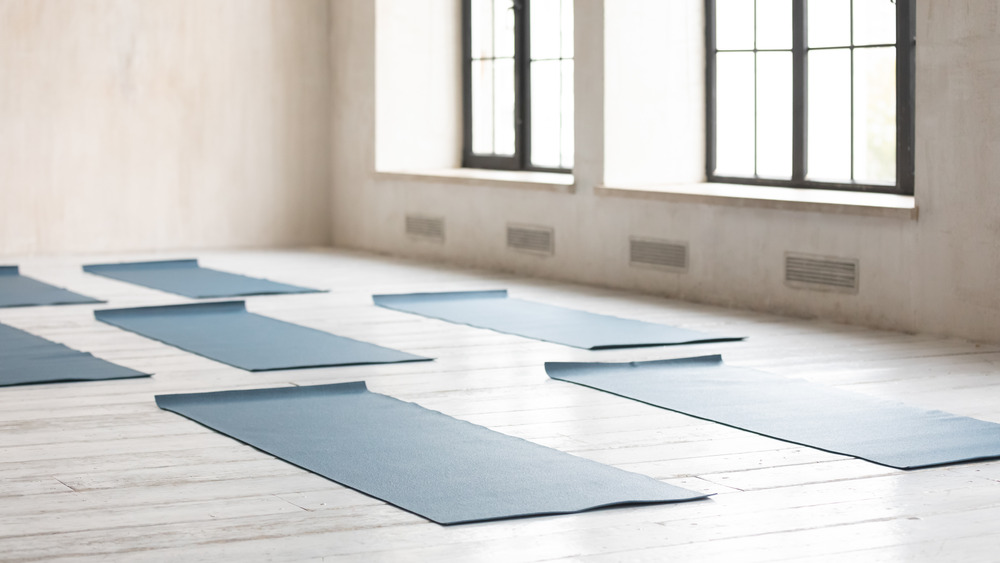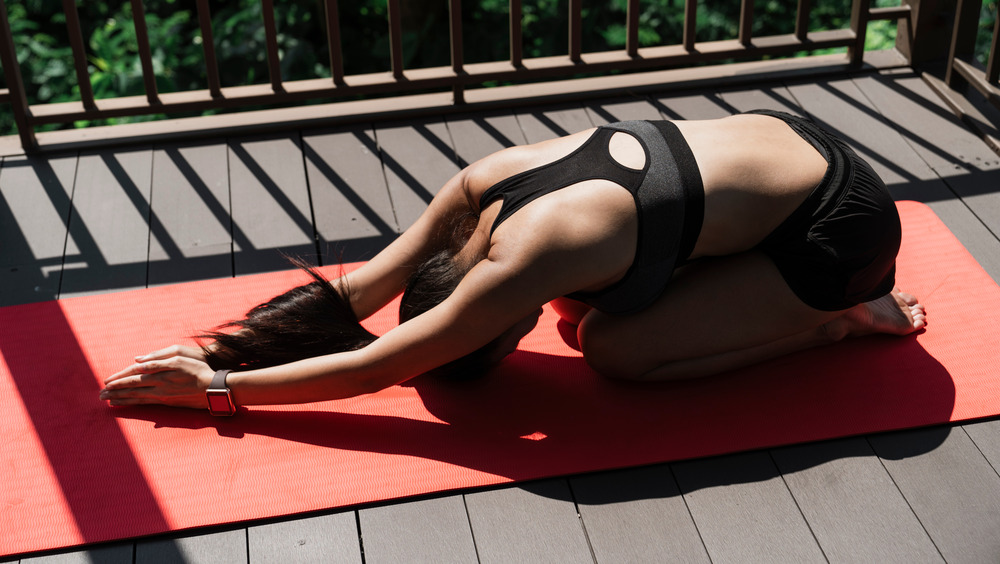Here's When You Should Really Replace Your Yoga Mat
Yoga has many health benefits to the body, especially when done regularly. Apart from improving flexibility and balance, it also boosts strength. Yoga can also ease body pains, especially in people with back problems and arthritis (via Healthline). Insomniacs can also use yoga for the promotion of better sleep. The "benefits are more due to its meditative properties," Dr. Anastasia Rowland-Seymour, a sleep expert from John Hopkins Medicine, said.
For people who like challenges or are looking to burn more calories, they can do hot yoga instead. The exercise is conducted in a heated room (via The New York Times). An example of hot yoga is Bikram yoga. According to a review published in The National Center for Biotechnology Information, the form of exercise "has been shown to improve lower body strength, lower and upper body range of motion, and balance in healthy adults." Furthermore, the type of yoga can also "improve glucose tolerance, bone mineral density, blood lipid profile, arterial stiffness, mindfulness, and perceived stress." However, yoga beginners still need to evaluate whether the exercise can do more harm than good for their bodies. Research is key.
When practicing yoga, using a yoga mat is very helpful, as it provides a soft cushion against the floor when doing various poses. A high-quality yoga mat comes with plenty of benefits — apart from comfort, the material can also last longer. Then again, replacing your mat is still important. Just how often depends on several factors.
Replace your yoga mat within six to 12 months
Replacing a yoga mat depends on how much you use it. Do you practice a couple times per week? Or do you take to your mat every day? Yoga mats endure a lot when used, and that is why choosing a high-quality mat is essential for better practice. The less-expensive options can be budget-friendly, but they tend to fall apart easily, and the padding may not last as long — which could mean less comfort, and you wouldn't want that. Thick mats can help yogis avoid injuries when assuming various poses, especially the advanced ones.
The type of yoga can also impact your mat. Experts suggest replacing a yoga mat within six to 12 months of use. "Past that, you'll probably notice changes to its surface, firmness, or other conditions that are a pretty good indication it's reached the end of its usage," John Fawkes, a Precision Nutrition-certified nutritional counselor, and an NSCA-certified personal trainer, told PopSugar. Then again, for yogis who practice every day, their yoga mats may wear down faster than those of people who practice three times a week. Individuals who practice hot yoga can also expect to replace their mats more often. Dr. Minh Nghi from Texas Health Harris Methodist Hospital Southwest Fort Worth advises yoga lovers to observe their mats' appearance and their comfort level. "If the mat is worn, doesn't cushion anymore, is too slippery, or is torn, then it should be replaced," he said.
An old yoga mat can lead to injuries and infections
A yoga mat is a piece of athletic gear that can make practicing yoga easier — provided that it's in top condition. A worn-out mat can cause aches and injuries as the protective cushion may not be so effective anymore. The grip of the mat on the floor and on your body may also decline through regular use. When the material of the yoga mat gets thinner, possible slipping may happen. A buildup of sweat and germs also occurs from use, leading to the presence of bacteria.
"Yoga mats are basically the perfect breeding ground for bacteria contained in our sweat," John Fawkes told PopSugar. He also notes that not cleaning the yoga mat when needed and rolling it up immediately after use can trap the germs. Using a dirty yoga mat can lead to bacterial infections, viruses, and the growth of fungi. Bad smells can also occur, especially when sweat is trapped and not aired out after a hot yoga session. Gross! Therefore, cleaning your yoga mat is vital, as well as replacing it when the need arises.


